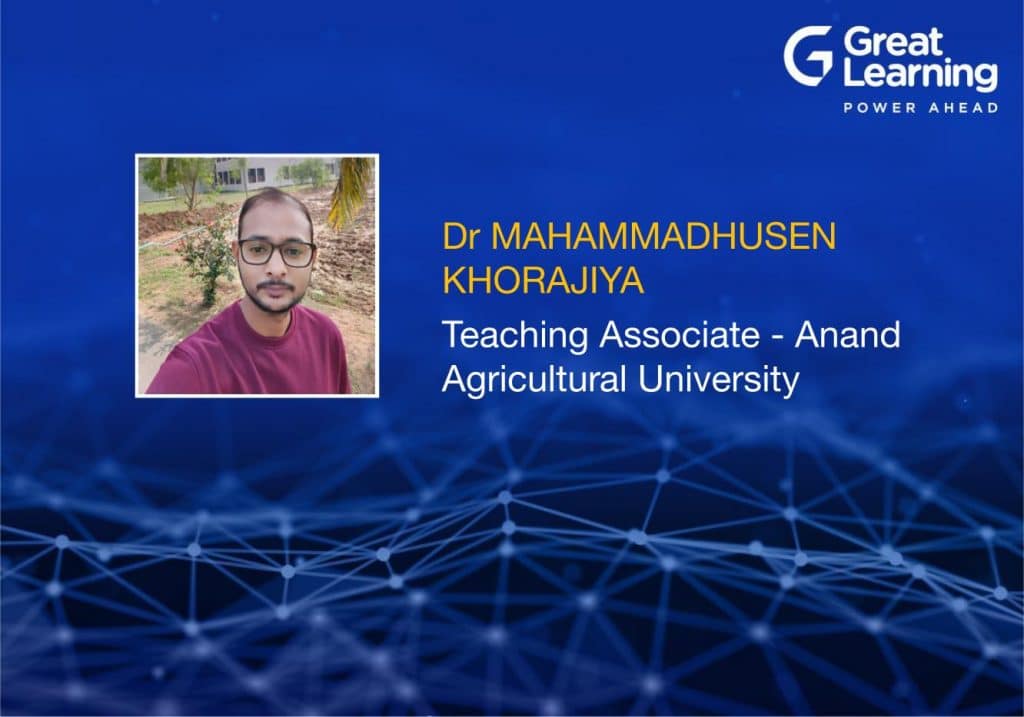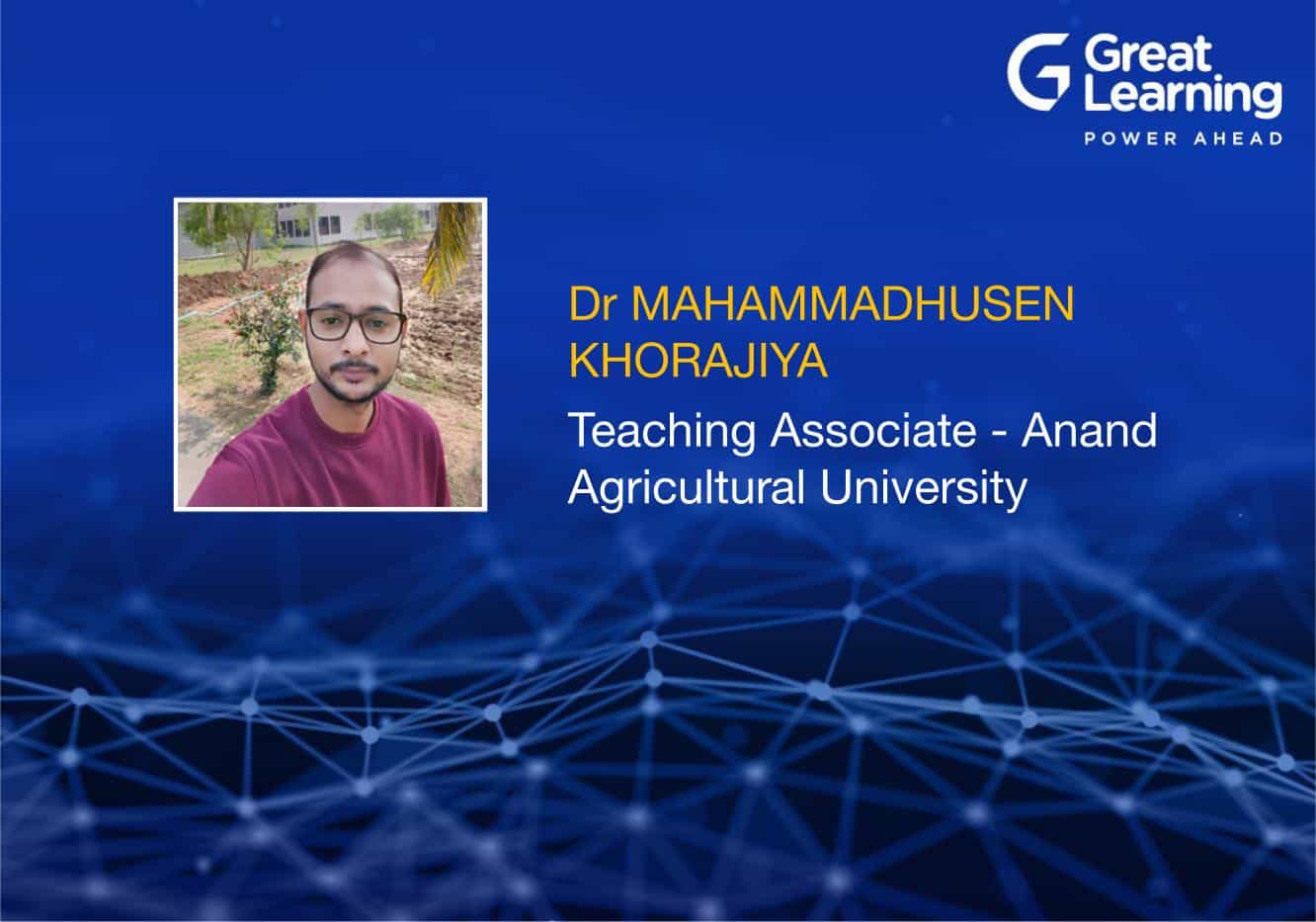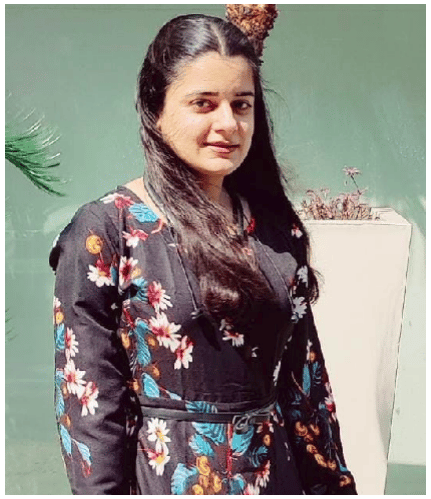
Contributed By: Dr MAHAMMADHUSEN KHORAJIYA
I completed PhD in Agricultural Economics in 2016 awarded a silver medal for securing the highest OGPA during the PhD program. University Grant Commission (UGC) offered a National fellowship during study tenure. I also, work as a data collector in the project conducted by IIM Ahmedabad during my PhD program. My area of research is agricultural trade, rural development, marketing, market integration, and price forecasting. Having a tactical knowledge of statistics and econometrics, my passion is to explore the opportunities and their application in the analytical field beyond the academic arena to become better decision-driven data analysts. Currently working as Teaching Associate at Anand Agricultural University since 2017. Before joining as a Teaching Associate, I worked as Senior Research Fellow in a forest development project sponsored by the state government.
Problem Statement: The major problem faced at the workplace is choosing the right approach. The selection of methodology is a key challenge when statistical techniques are used. Moreover, statistical inference is also intricate to explain the result in the business context. Integrated weed management is a new concept that involves the utilization of a combination of mechanical, chemical, and cultural practices of weed management in a planned sequence without affecting the ecosystem. Since the change in knowledge and attitude preceded the adoption of an innovation and hence it is essential to analyze the situation and the way and means for enhancing the rate of adoption with reference to integrated weed management among the group of farmers. When dealing with the survey data, major problems are exploring the various features of data that directly help the farmers and researchers. Lack of human resources having statistical knowledge is another issue organization is facing.
Tools and Techniques: The data collected through the interview schedule was subjected to statistical analysis. They were coded, processed, tabulated, and classified. Proportion, Mean, correlation, and one-way analysis of variance (ANOVA) was used to study the difference in knowledge of cotton growers among different components of integrated weed management. The hypotheses formulated were tested and conclusions were drawn in order to make the findings meaningful.
Insights: In order to study the relationship among variables, correlation is a widely used measure. Besides, descriptive statistics help to find a basic understanding of key features.
Solution /Recommendation: The study revealed that nearly two-thirds of cotton growers found the category of a high level of knowledge regarding basic knowledge about weeds. Education, social participation, mass media exposure, and landholding exerted positive and significant influences on the knowledge level of cotton growers in relation to integrated weed management practices.
Impact Generated: Research help organizations to focus on key attributes that have a positive relationship with farmers’ attitude to improve the knowledge about various innovative technology. The organization is conducted a training program periodically to improve farmer adoption of modern techniques. The paper was accepted in a national seminar for presentation. It greatly helps for my performance the International Journal of Agriculture Sciences.







